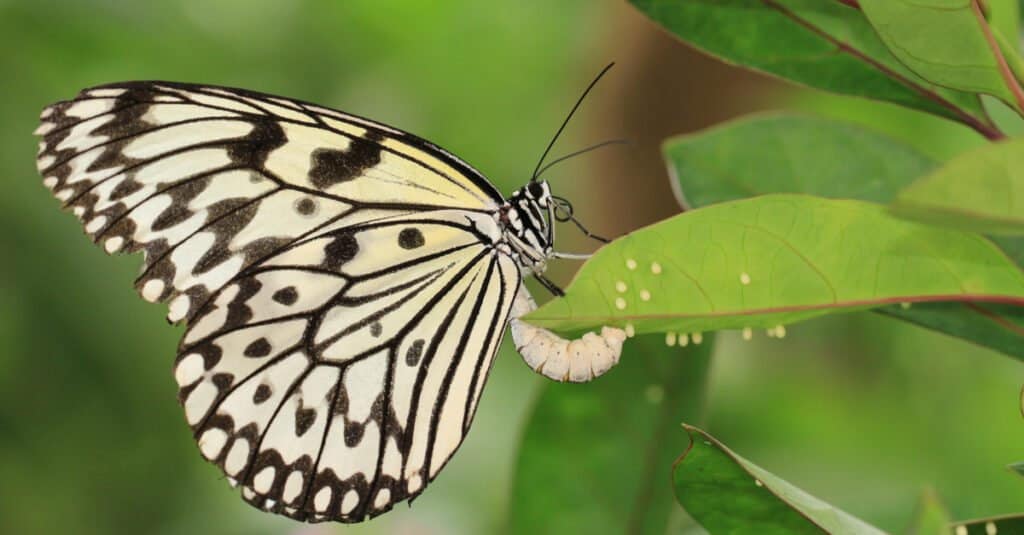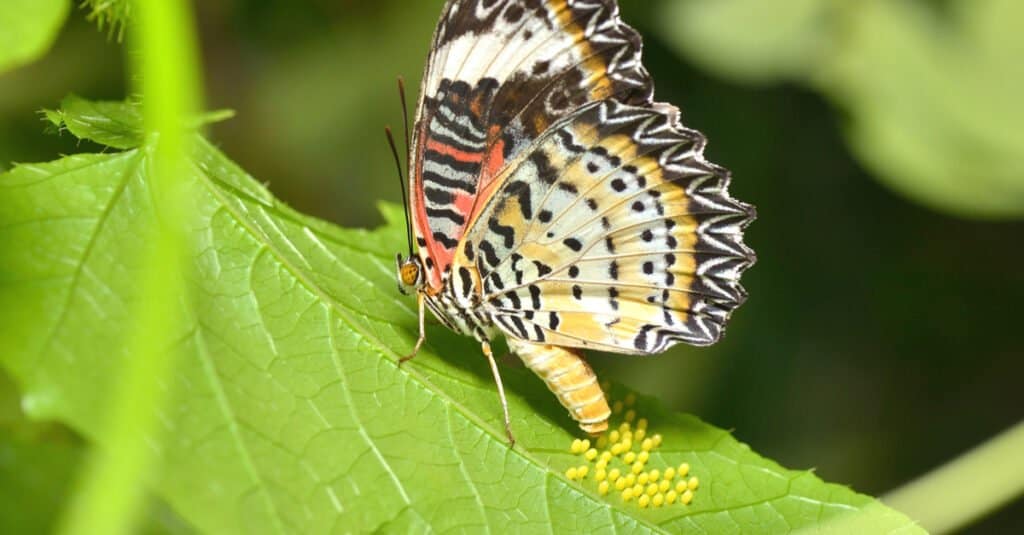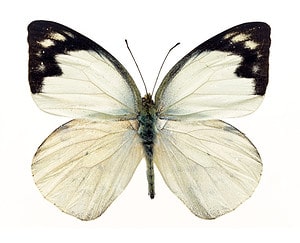Clad in all kinds of ornate and beautiful colors, the butterfly is a winged insect that flies from flower to flower, consuming the rich sugary nectar inside. There are some 20,000 species of butterflies worldwide, spread across nearly all of the planet’s major ecosystems.
They vary quite a bit in terms of color, shape, and behavior, but all of them undergo a complex four-stage life cycle: eggs, larva (or caterpillar), pupa, and adult. The egg stage lasts for only a short time, but it’s possibly the most difficult and fraught part of the butterfly’s natural life cycle.
Butterfly reproduction involves a complex and intricate process. Males will attempt to identify females from their species by color, shape, and even scent.
Once he’s found a potential mate, males court her by performing an aerial dance. If the female accepts what he’s offering, then they will settle on the ground and connect their abdomens.
The male will then transfer packages of sperm and nutrients to the female. She can store the sperm in an organ called a bursa for later use. Then she will depart to either mate again or find an appropriate place to lay her eggs.
Whether you’re an avid butterfly enthusiast or just looking for some basic information, this article will cover some fascinating facts about how butterflies lay their eggs.
What do the Eggs Look Like?

©happykamill/Shutterstock.com
The appearance of the eggs is unique to each species. They can come in many different shapes and textures, including round, smooth, oval, bumpy, cylindrical, and wrinkled. Most are incredibly small, measuring only about one to three millimeters long, or about the same size as a pinhead.
Fortunately, some of the most common species lay white, yellow, or orange eggs that stand out a bit against the green leaves. They tend to gradually become darker right before the caterpillar hatches.
If you’re looking for a specific species of butterfly, then the easiest way to identify them is to locate the host plant first. Each species is adapted for a specific plant: the monarch butterfly is tailored for milkweeds, the European peacock butterfly prefers nettles, the eastern tiger swallowtail butterfly is adapted for tulip trees and wild black cherry trees, etc.
You should always do your research first to determine which butterflies and host plants are present in your local area. Sometimes, if you have a bit of patience, you can observe the female butterfly arriving at the host plant, curling up her abdomen, and releasing the eggs onto the leaves.
When do Butterflies Normally Lay Their Eggs?
Most species of butterflies will mate and lay their eggs at some point in the spring and early summer, though sometimes as late as the autumn. Each one is slightly different. The monarch butterfly, for instance, is a particularly interesting case of an extreme butterfly life cycle.
It will go through about four generations per year, the first one emerging as early as March and the last one emerging at some point between July and October.
It’s only this last generation that undertakes the annual migration south for the winter. While the other generations develop, reproduce, and die in only a matter of months, this final monarch generation of the year will enter a state of delayed development so it can last the entire winter and complete the migration south.
Other butterfly species will take multiple generations to complete a single migration while stopping at regular intervals to lay their eggs along the way. Unfortunately, butterfly migration is still steeped in some mystery and there are a lot of facts we don’t yet understand about it.
Eggs are laid on plants by adult female butterflies. These plants are then food for hatching caterpillars. Butterfly eggs are laid during the spring, summer, and fall. However, this timeline often depends on the species of the butterfly laying the eggs.
How Does the Butterfly Lay its Eggs?
The host plant is incredibly important for the caterpillar’s survival. It will provide both a food source and a home until the butterfly transforms into an adult. Once it has finished mating, the female will attempt to identify the correct host plant by shape, size, and even scent.
She will fertilize the eggs with the sperm stored in her bursa (usually the last sperm is used first) just before they emerge from her body.
The nutrients delivered by the male in the mating process are very important for the formation of the egg; so much so that males will often spend extra time gathering nutrients just for this purpose.

©jakrit yuenprakhon/Shutterstock.com
Butterflies have various strategies for laying their eggs. Some species will lay their eggs individually one at a time, while others will lay an entire cluster all at once. Some will choose to lay the eggs on the top of the plant, while most will choose the underside for protection against predators.
The mother must also take special care to ensure the temperature and humidity levels are just right.
Too little moisture will dry out the eggs, whereas too much moisture can result in rot or fungus setting in. Once she has finished, the female will then fix the eggs to the plant with a waxy substance to prevent them from falling.
One of the most astonishing facts is that a single female will normally produce anywhere between a few hundred and a few thousand eggs throughout the entire breeding season.
How Long do the Eggs Take to Hatch?
Once the eggs are laid, the female will have no other association with the young. While they are well-hidden from predators, very few butterflies make it to adulthood. Most will fall prey to ants, birds, small mammals, and other predators.
If they manage to survive this far, then most eggs will take anywhere between a few days and a few weeks to fully hatch. But in extreme cases, some species are adapted to spend the entire winter in the egg stage.
Winter presents an enormous challenge for any northern insect species. Butterflies normally can’t survive temperatures below freezing unless they seek out shelter and reduce their activity levels.
To deal with this problem, some species undergo a process called “diapause” in which they will spend the entire winter in a state of suspended development and growth with metabolic activity reduced to a bare minimum.
It’s similar but not the same as hibernation. While diapause can occur at any stage of a butterfly’s life cycle, it’s the most common in either the egg stage or the larval stage. Eggs in a state of suspended development during the winter won’t hatch until the following spring.
Next Up…
- Do Butterflies Bite? – Find out if butterflies can bite if you pick them up!
- Monarch Butterfly Lifespan: How Long Do Monarch Butterflies Live? – Find out the lifespan of Monarch butterflies!
- Do Butterflies Drink Blood? And 13 More Surprising Butterfly Facts – Butterflies have a tube-like tongue that sucks up nectar, but can they drink blood? Find out now!
The photo featured at the top of this post is © NEOS1AM/Shutterstock.com
Thank you for reading! Have some feedback for us? Contact the AZ Animals editorial team.






